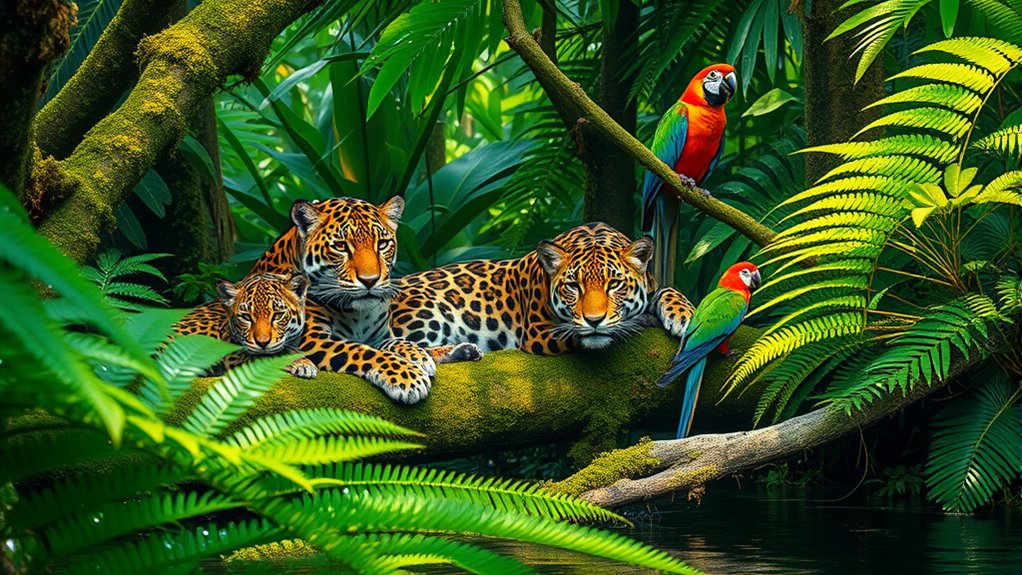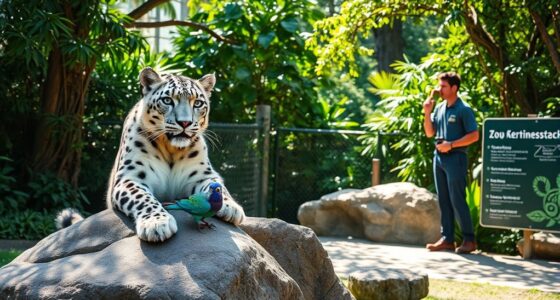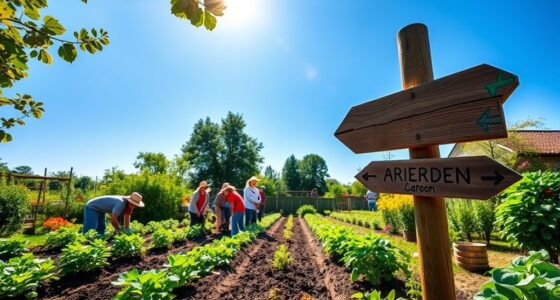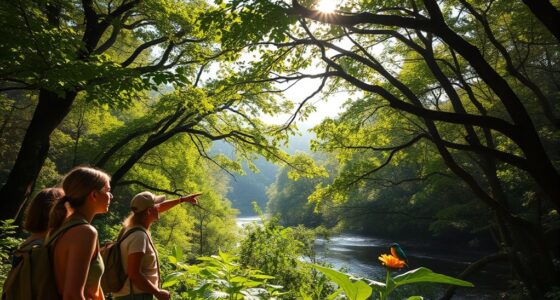Saving wildlife goes beyond adorable animals; it protects essential ecosystems that support your well-being. Healthy habitats improve air and water quality, boost crop production through pollinators, and help prevent natural disasters. They also sustain economies by supporting tourism, fisheries, and forestry. When you support wildlife conservation, you’re contributing to climate stability and healthier communities. There’s much more to discover about how these efforts create a stronger, more resilient world for everyone—keep exploring to learn more.
Key Takeaways
- Saving wildlife maintains ecological balance, supporting ecosystem stability and preventing ripple effects that threaten environmental health.
- Protecting species enhances ecosystem services like pollination, water purification, and climate regulation, benefiting human well-being.
- Conservation efforts bolster local economies through sustainable tourism, fisheries, and forestry, creating jobs and community resilience.
- Responsible management of wildlife promotes biodiversity, which is vital for resilience against environmental changes and disasters.
- Preserving wildlife contributes to planetary health, ensuring resources and ecosystems remain sustainable for future generations.
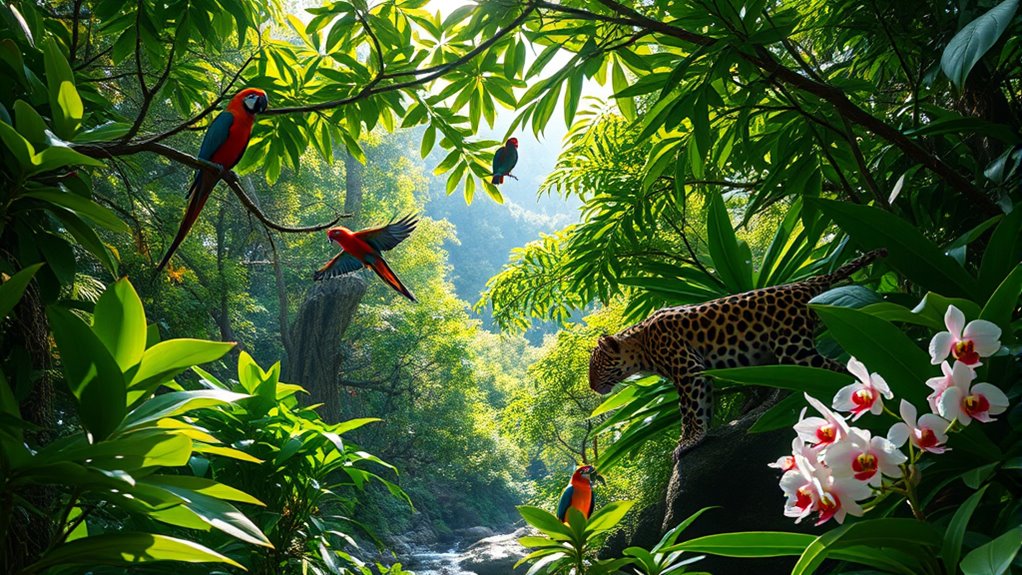
Saving wildlife isn’t just about protecting animals; it also benefits ecosystems and human communities. When you take steps to preserve endangered species and their habitats, you help maintain ecological balance, which is essential for a healthy planet. Every species plays a specific role—whether as a predator, prey, pollinator, or seed disperser—and disrupting these relationships can cause ripple effects that threaten the stability of entire ecosystems. By safeguarding wildlife, you contribute to the resilience of forests, grasslands, and aquatic environments, ensuring they continue to function properly. This ecological balance translates into improved air and water quality, soil fertility, and climate stability—benefits that everyone relies on. Proper management and understanding of aviation regulations can also enhance efforts in conservation projects by facilitating responsible research and monitoring. Beyond the environmental advantages, saving wildlife also fuels economic growth. When ecosystems are healthy, they support sustainable industries like agriculture, fisheries, tourism, and forestry. For example, vibrant coral reefs attract divers and snorkelers, generating income for local communities, while healthy forests provide timber and non-timber products. Protecting wildlife can create jobs, stimulate local economies, and promote community development, especially in rural areas where livelihoods depend heavily on natural resources. Furthermore, maintaining biodiversity often reduces the costs associated with environmental degradation, such as flood control and pollution mitigation. These benefits demonstrate that investing in wildlife conservation isn’t just good for nature—it’s a smart economic strategy. You might also notice that conserving wildlife enhances ecosystem services that directly benefit human health and well-being. Pollinators like bees and butterflies ensure the productivity of crops, which keeps food prices stable and food supplies secure. Wetlands filtered by diverse plant and animal life act as natural water treatment systems, reducing the need for costly infrastructure. Forests and grasslands help regulate local climates, preventing extreme weather events that can damage infrastructure and displace communities. As you see these interconnected benefits, it becomes clear that protecting wildlife is a practical way to create a more resilient and prosperous society. In essence, your efforts to save wildlife ripple outward, supporting ecological stability, economic development, and community resilience. It’s not just about saving cute animals—it’s about maintaining the intricate web of life that sustains us all. When you recognize the broader impact, you’re more motivated to advocate for policies, support conservation projects, and make choices that favor sustainable use of natural resources. Ultimately, conserving wildlife is an investment in the health of our planet and the prosperity of future generations.
Frequently Asked Questions
How Does Saving Wildlife Impact Human Health?
Saving wildlife directly benefits your health by maintaining ecosystem stability, which supports clean air, water, and food sources. Healthy ecosystems help prevent zoonotic diseases by reducing contact between humans and wildlife that may carry harmful pathogens. When you protect wildlife, you also reduce disease transmission risks, ensuring a safer environment. Your efforts contribute to a balanced ecosystem, ultimately safeguarding your well-being and promoting long-term public health.
What Are the Economic Benefits of Wildlife Conservation?
Imagine opening hidden treasures like in Aladdin’s lamp—you benefit economically from wildlife conservation. By protecting ecosystems, you create thriving ecotourism opportunities that boost local economies. Healthy ecosystems also provide essential services like clean water, air, and pollination, which save costs and support industries. These economic gains foster sustainable development, ensuring communities thrive while you enjoy the long-term benefits of preserving our natural world.
Can Wildlife Conservation Help Climate Change Mitigation?
Wildlife conservation plays a key role in climate change mitigation by maintaining biodiversity benefits and habitat stability. When you protect ecosystems, you support healthy forests, wetlands, and grasslands that absorb carbon dioxide effectively. This reduces greenhouse gases in the atmosphere. By conserving wildlife, you help guarantee these natural buffers stay resilient, ultimately contributing to climate stability. Your efforts in safeguarding habitats are essential for a sustainable future and climate resilience.
How Do Local Communities Benefit From Saving Wildlife?
You benefit from saving wildlife through community engagement, which fosters a sense of pride and ownership in local ecosystems. As you participate in conservation efforts, you help preserve cultural traditions tied to native species and landscapes. This collaboration can boost eco-tourism, creating jobs and supporting your economy. Overall, protecting wildlife strengthens community bonds and guarantees natural resources are available for future generations, enriching your quality of life and cultural heritage.
What Are Innovative Technologies Aiding Wildlife Preservation?
Imagine you’re in a sci-fi movie, but it’s real—innovative tech like drone surveillance and genetic engineering is transforming wildlife preservation. Drones monitor habitats in real-time, preventing poaching, while genetic engineering helps boost endangered species‘ resilience. These advancements enable you to protect biodiversity more effectively, ensuring ecosystems thrive. By embracing such cutting-edge tools, you actively contribute to a future where wildlife conservation is smarter, more efficient, and even more impactful.
Conclusion
By saving wildlife, you’re not just protecting adorable animals; you’re safeguarding the very fabric of our planet. Think of it as tending a delicate garden—each species is a essential bloom that keeps the ecosystem thriving. When you support conservation, you’re planting seeds of hope for future generations. So, step up and be a hero in this grand adventure, because the health of the Earth depends on your actions just as much as it depends on theirs.
